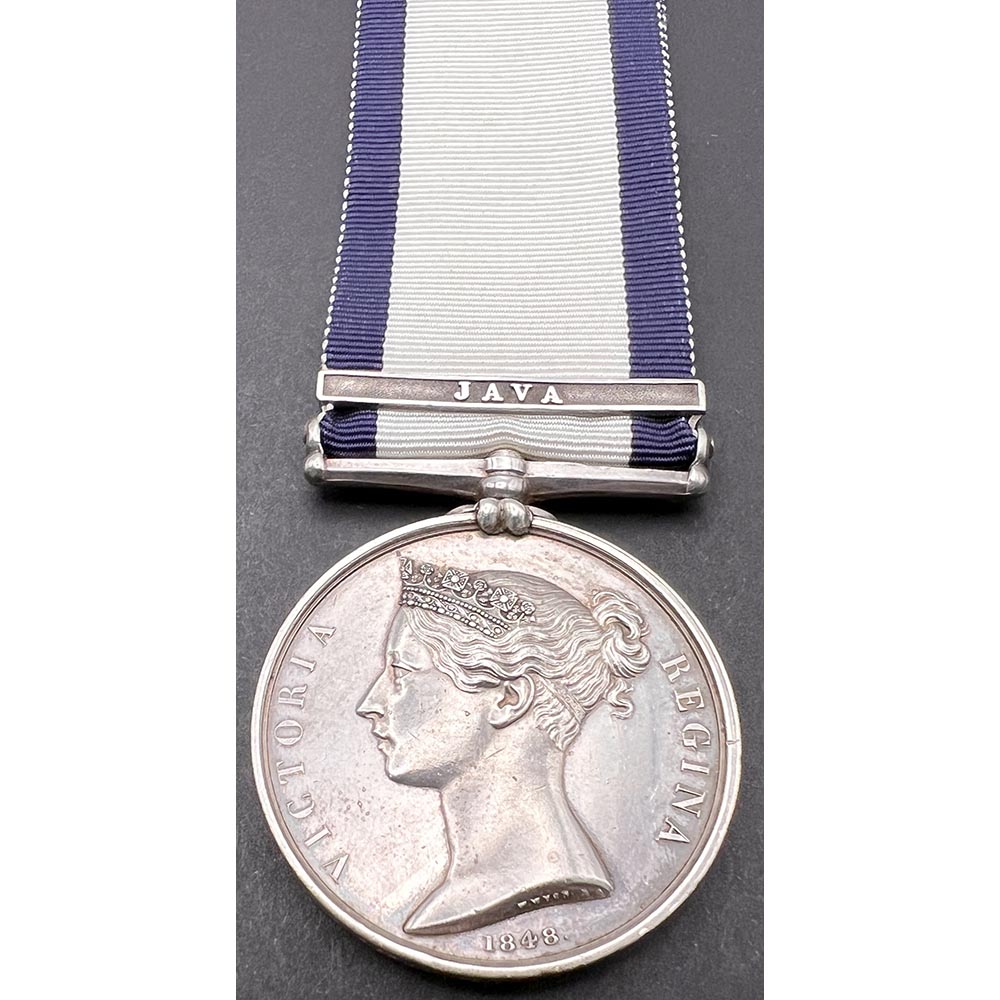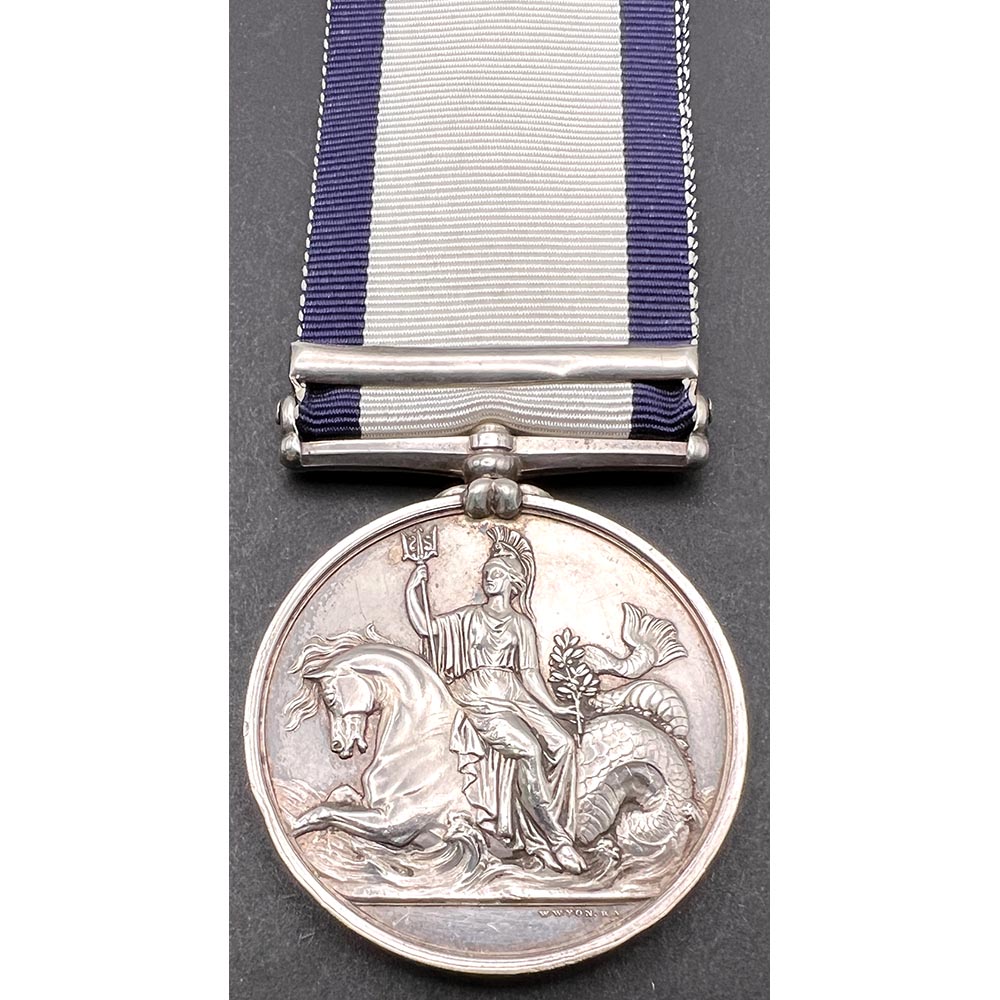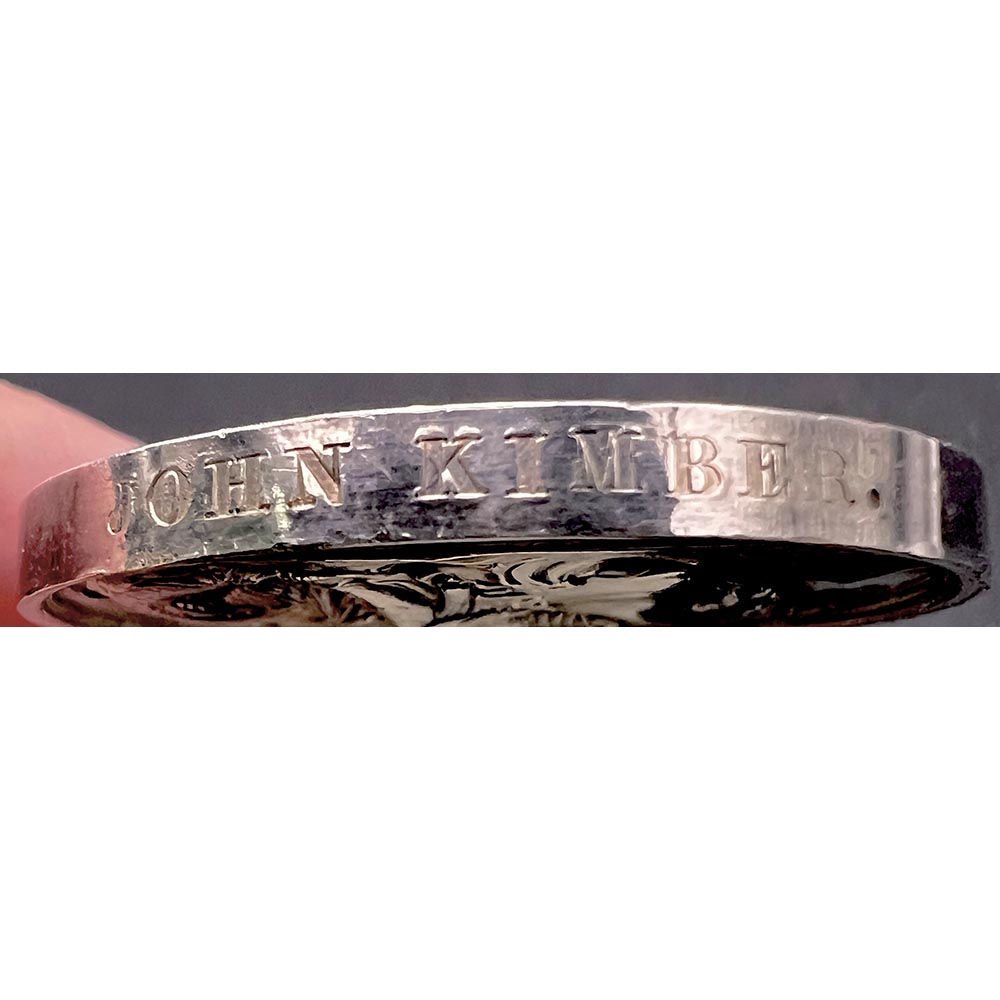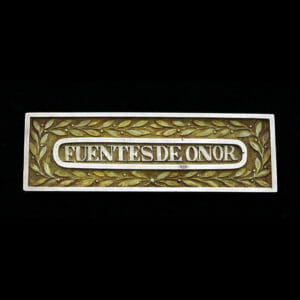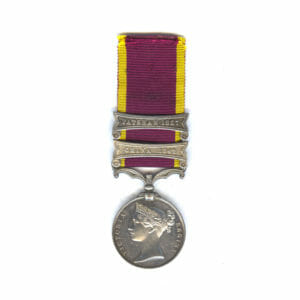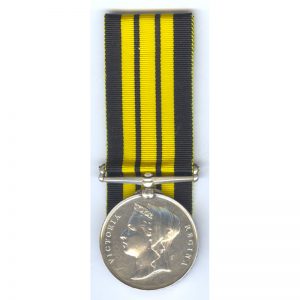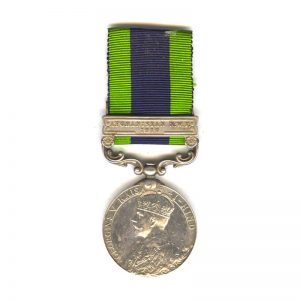Description
Naval General Service Medal, bar Java, John Kimber, LM and Ord on the Buecphalus in Java and Royal Marine on the Resolution at the Battle of Copenhagen 1807, served in all 3 Branches of the Navy.
“John Kimber is an old, weather beaten, mariner.” – 60 year old John is tried in court for forgery and sentenced to 8 months imprisonment and labour, he was put in Newgate Prison.
Officially impressed: “JOHN KIMBER”
Confirmed on the medal roll as having served as a Landsman and Ordinary Seaman of the Buecephalus in the Java Invasion of 1811, it is a unique name on the medal roll.
Provenance, ex Eugene Ursual Catalogues, 1953 and 1957, Spink 6th May 1984, Ex Stansfeld Collection.
He had also seen prior service in the Royal Marines in the Bombardment of Copenhagen during the Second Battle of Copenhagen 15th August – 7th September 1807 on board HMS Resolution, however no clasp was awarded for this action. The incident led to the surrender of the Entire Danish Navy, who were a neutral country at the time, and sparked the Anglo-Russian War of 1807 which lasted until 1812.
Mr John Kimber, had the unusual distinction of having served in all 3 branches of the Sea, He was first a Private in the Royal Marines, then a Landsman and Ordinary Seamen of the Royal Navy when he earned this medal, and in between Royal Navy service and throughout the rest of his life he was a Seaman of the Merchant Navy.
“John Kimber, an old, weather beaten, mariner, was charged with feloniously uttering a forged order for the payment of money, well knowing the same to be forged.” an old Seaman John Kimber, who could read and write, using his skills to forge a payment note from his Captain, he was imprisoned during 1848.
John Kimber, was born on Bermondsey, London about the 10th December 1789.
He first went to sea as a “Boy” in the year 1804.
Having enlisted in the Royal Marines, and around 19 years old, he entered the ship HMS Resolution on 26th July 1807 and left the books on 25th December 1807.
On this day, 26th July 1807, a fleet of 38 Vessels set off from England for Copenhagen
THE BATTLE OF COPENHAGEN 1807, A ROYAL MARINE
During this time, she was under the Command of Captain George Burlton, and as soon as he got on board, they set off to Denmark.
Denmark was a neutral company in a time of great tension throughout Europe.
THE INVASION OF JAVA 1811, A ROYAL NAVY SAILOR
He did not see another ships posting after Copenhagen, until he switched over to the Royal Navy and was taken on board the new ship HMS Bucephalus launched in 1808, on 18th July 1810.
He saw service on the ship for 3 years from 18th July 1870 to 27th August 1813, having advanced from Landsman to Seaman on 16th September 1811.
The ship was sent to the East Indies, on 9th October 1810 one of her Lieutenants, named Flott was court martialled on board at Madras for using seditious language.
Later on 17th February 1811 the ship departed for the rendezvous for the expedition to Java.
On 3rd August 1811 the ship arrived at Chilingching on the coast of Java.
On 4th August 1811, under the Command of Rear Admiral Stopford, he detached 4 ships including the Bucephalus to then go and blockade the nearby French Frigates, Nymph and Medusa in Batavia Road.
Some tension occurred on 3rd September 1811, the 2 French Frigates departed and the Bucephalus sailed after them, being joined the next day by their backup, the Barracouta.
However by the 12th, the French ships were instead chasing after the Bucephalus as they eventually escaped in shoal water, escaping the French by the 13th.
After 3 years away, the ship returned back to Dover on 10th August 1813 with the East India Convoy, which was when Kimber left the ship.
He next took up a posting on HMS Severn from 28th August 1813 until 5th October 1813.
Disappearing from the books of the Royal Navy, he saw his last posting over 20 years later, joining HMS Mastiff from 4th April 1836 until 7th September 1836.
He was admitted to Greenwich Hospital on 3rd April 1851.
